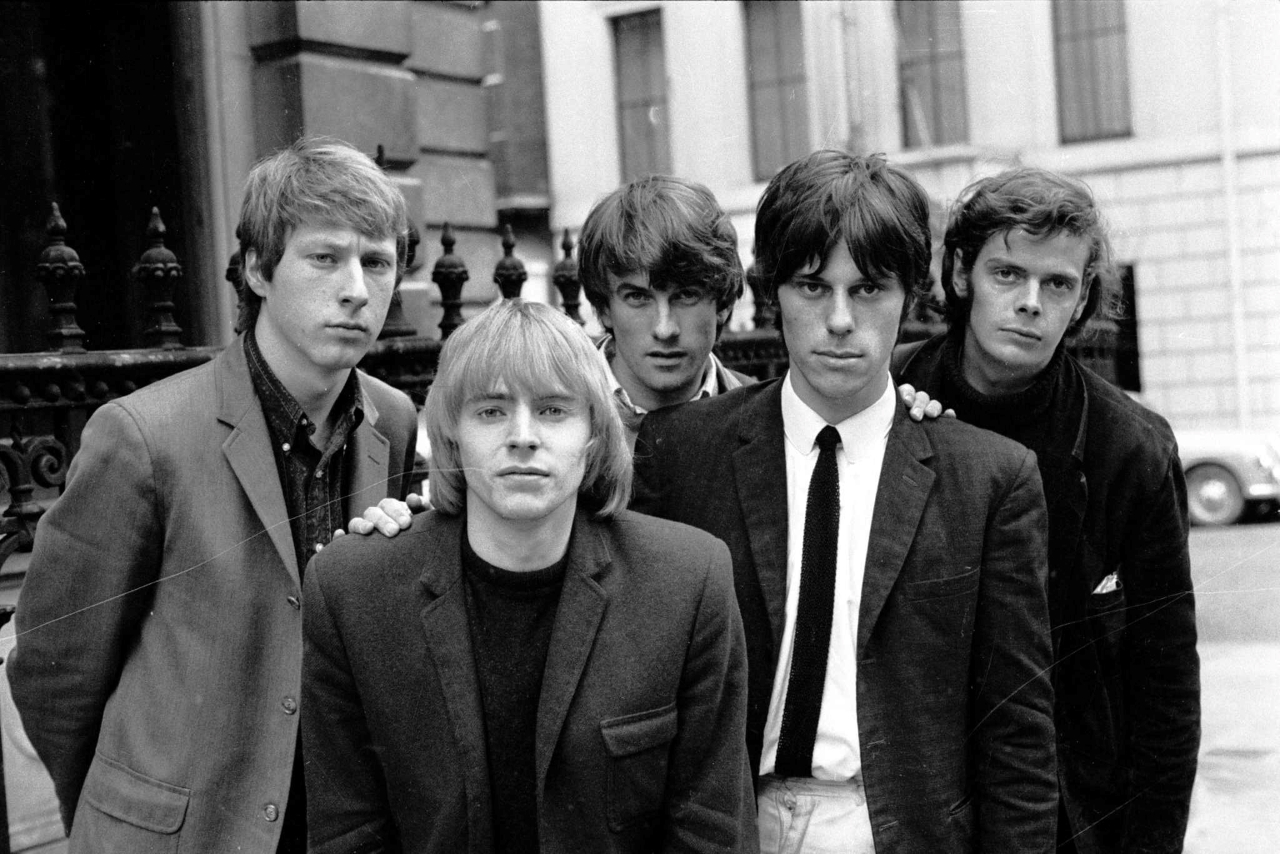🎸 The Yardbirds in America, 1966 – When Two Guitar Legends Shared One Stage
In the autumn of 1966, when the leaves were just beginning to fall over Manhattan, a British invasion was brewing stronger than ever. The Beatles had already conquered America, The Rolling Stones were stirring rebellion, and The Yardbirds — with two young guitarists destined for immortality — were about to make history.
On October 19, 1966, The Yardbirds landed in New York to begin their first American tour, carrying with them an electric storm that would soon ignite the future of rock.
It was the only time Jeff Beck and Jimmy Page would share the same stage on a full tour — two of the greatest guitarists in history, their styles colliding and blending in unpredictable, explosive harmony.

⚡ The Summer Before the Storm
By mid-1966, The Yardbirds were no longer just another British blues band. They had evolved from their early days with Eric Clapton, diving into a more experimental, psychedelic sound.
When Jeff Beck joined the band in 1965, he brought with him a wild, unrestrained approach — distorted riffs, feedback-laced solos, and a fierce attitude that pushed the group into new sonic territory.
Then came Jimmy Page.
Originally hired to play bass in 1966, Page quickly switched to co-lead guitar alongside Beck. The idea of two virtuosos trading riffs night after night was thrilling — but also volatile.
Both were ambitious, both were innovators, and both were destined for separate greatness. But for a few short weeks, their paths ran side by side.
🔥 The New York Arrival
When their plane touched down in New York on October 19, the air buzzed with expectation. American audiences had heard their hits — “Heart Full of Soul,” “Shapes of Things,” and the fiery “Over Under Sideways Down” — but seeing them live was another experience entirely.
Their first stop was at the Fillmore East, where they played to a crowd that didn’t yet realize it was witnessing the birth of something monumental.
On stage, Beck and Page stood side by side, feeding off each other’s energy — Beck’s sharp, erratic bursts of sound cutting through Page’s more methodical, layered playing.
The chemistry was electric. But so was the tension.
Jeff Beck was unpredictable — his temper, his perfectionism, and his physical exhaustion from the road began to take a toll.
Jimmy Page, on the other hand, was quietly absorbing everything — learning, experimenting, and shaping the ideas that would soon become the backbone of Led Zeppelin.
🎶 The Sound of Chaos and Creation
Night after night, The Yardbirds tore through sets that blurred the lines between blues, rock, and raw improvisation.
Songs like “Over Under Sideways Down” and “I’m a Man” became extended jam sessions, filled with wailing solos and echoing distortion.
Fans who came for neat harmonies found themselves thrown into a storm of sound — chaotic, but alive.
Critics didn’t always understand it. To some, it was “too loud,” “too strange,” even “out of control.”
But for a generation that was growing restless with polished pop, this was rebellion set to six strings.
🛠️ Jeff Beck’s Exit
The American tour was both a triumph and a breaking point. Beck’s health deteriorated during the tour, and his frustration with management — and with the band’s inconsistent direction — reached a boiling point.
After just a handful of shows, Jeff Beck quit the tour, leaving Jimmy Page as the sole guitarist.
It was a dramatic moment — but also an inevitable one. Beck was a comet: brilliant, blinding, and destined to burn fast. Page, meanwhile, was the architect, already sketching the future in his mind.
That future would come just two years later — when The Yardbirds dissolved and Page built Led Zeppelin from its ashes.
🌌 The Legacy of the Dual-Guitar Lineup
For a brief window in 1966, The Yardbirds were a living paradox: a band with two lead guitars, two visions, and one shared destiny.
Though the lineup was short-lived, it left behind a powerful legacy that shaped the evolution of rock guitar.
Jeff Beck went on to form the Jeff Beck Group, pioneering heavy blues-rock and influencing the sound of early metal.
Jimmy Page took the ideas they explored together — feedback, sustain, dynamic contrast — and forged them into the thunderous architecture of Led Zeppelin.
Every note played during that 1966 tour felt like a spark from the forge of modern rock.
🕰️ Looking Back
Today, when we listen to “Over Under Sideways Down” or live bootlegs from that tour, we can still feel the urgency — two geniuses wrestling with sound, with ego, and with the limits of their own creation.
The tour didn’t last.
The lineup didn’t survive.
But the moment — that brief, burning collision between Beck and Page — became one of those perfect accidents that define an era.
It was more than a tour.
It was the sound of rock learning to fly.